Growing up in a Filipino household means cherishing recipes that tell stories of our culture, and Tupig is one of those treasures that deserves to be preserved and shared. This beloved rice cake from Pangasinan isn't just a street food favorite, it's a testament to how our ancestors transformed simple ingredients into something extraordinary.
When I first learned this recipe from my grandmother, she emphasized that making Tupig isn't just about following steps; it's about understanding the gentle art of wrapping, the patience of grilling, and the joy of sharing.
Today, as our lives become increasingly modern, traditional delicacies like Tupig risk being forgotten. That's why I'm sharing our family's version of this recipe, perfected through generations of Filipino home cooks.
This recipe captures the authentic flavors and techniques that make Tupig special. The smell of charred banana leaves, the sticky-sweet rice filling, and the tender coconut strips - these elements come together to create not just a snack, but a piece of our cultural identity worth preserving for future generations.
What is Tupig?
Tupig is an heirloom Filipino rice cake originating from Pangasinan province. This street food staple marries ground glutinous rice with fresh coconut strips and coconut milk, enriched with brown sugar, then wrapped in banana leaves before being charred over hot coals.
The cooking process creates a distinctive duality: a caramelized exterior giving way to a chewy, sweet interior. Originally served during Christmas and New Year celebrations, tupig has evolved from a seasonal treat into a beloved commercial commodity available year-round, while maintaining its traditional preparation method that imparts an essential smoky complexity.
Jump to:
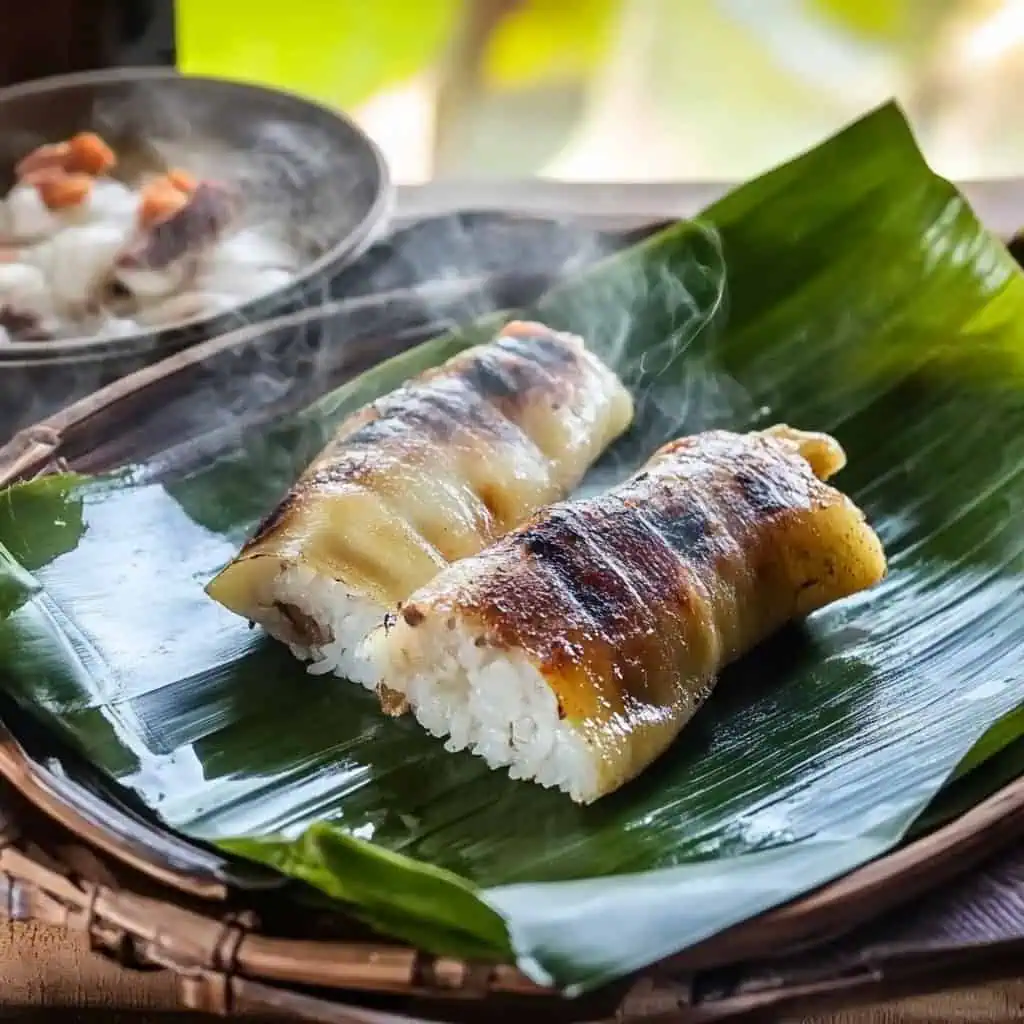
Why You'll Love This Recipe
- Authentic street food experience from Northern Philippines
- Perfect blend of chewy and crispy textures
- Simple, natural ingredients
- Unique cooking method that creates distinct smoky flavors
- Versatile as a snack, dessert, or breakfast accompaniment
- Rich cultural significance in Filipino celebrations
Ingredients
These ingredients were chosen with purpose and tradition in mind. Glutinous rice creates the sticky, chewy texture that defines tupig. Young coconut strips add freshness and textural contrast. Coconut milk binds everything together while adding richness.
Brown sugar provides sweetness with caramel notes that deepen when grilled. Finally, banana leaves aren't just for wrapping, they infuse the tupig with a subtle, earthy aroma and help create the characteristic charred exterior during grilling.
Together, these simple ingredients showcase Filipino ingenuity, using locally abundant resources to create something truly special.
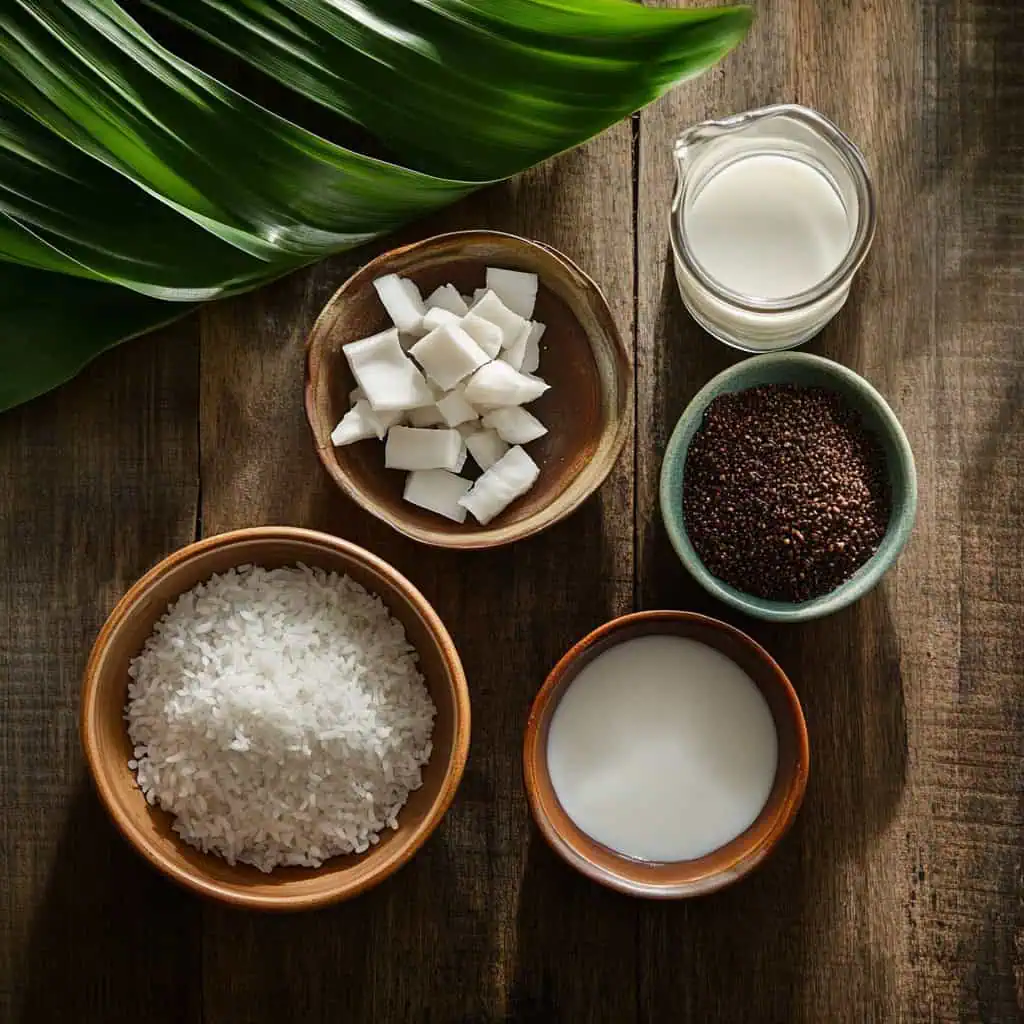
Ingredients
- 2 packed cups glutinous rice (malagkit)
- 1 cup young coconut strips (buko strips)
- 1 cup coconut milk (gata)
- ½ cup brown sugar
- Banana leaves, cleaned and softened over heat
Equipment
- Blender or food processor - Essential for grinding the soaked rice into a fine powder that creates the perfect tupig texture.
- Cheesecloth or fine strainer - Needed to thoroughly drain the soaked rice before grinding, ensuring your mixture achieves the proper consistency.
- Charcoal grill or flat griddle - The traditional cooking method that imparts the authentic smoky flavor. A gas grill can work in a pinch, but charcoal is preferred.
- Mixing bowls - For combining ingredients and preparing the mixture.
- Measuring cups and spoons - For precise measurements that ensure consistent results.
- Tongs - Heat-resistant tongs will help you safely turn the tupig during grilling.
- Sharp knife - For preparing and cutting banana leaves to size.
- Clean kitchen towels - Useful for wiping banana leaves and handling hot items.
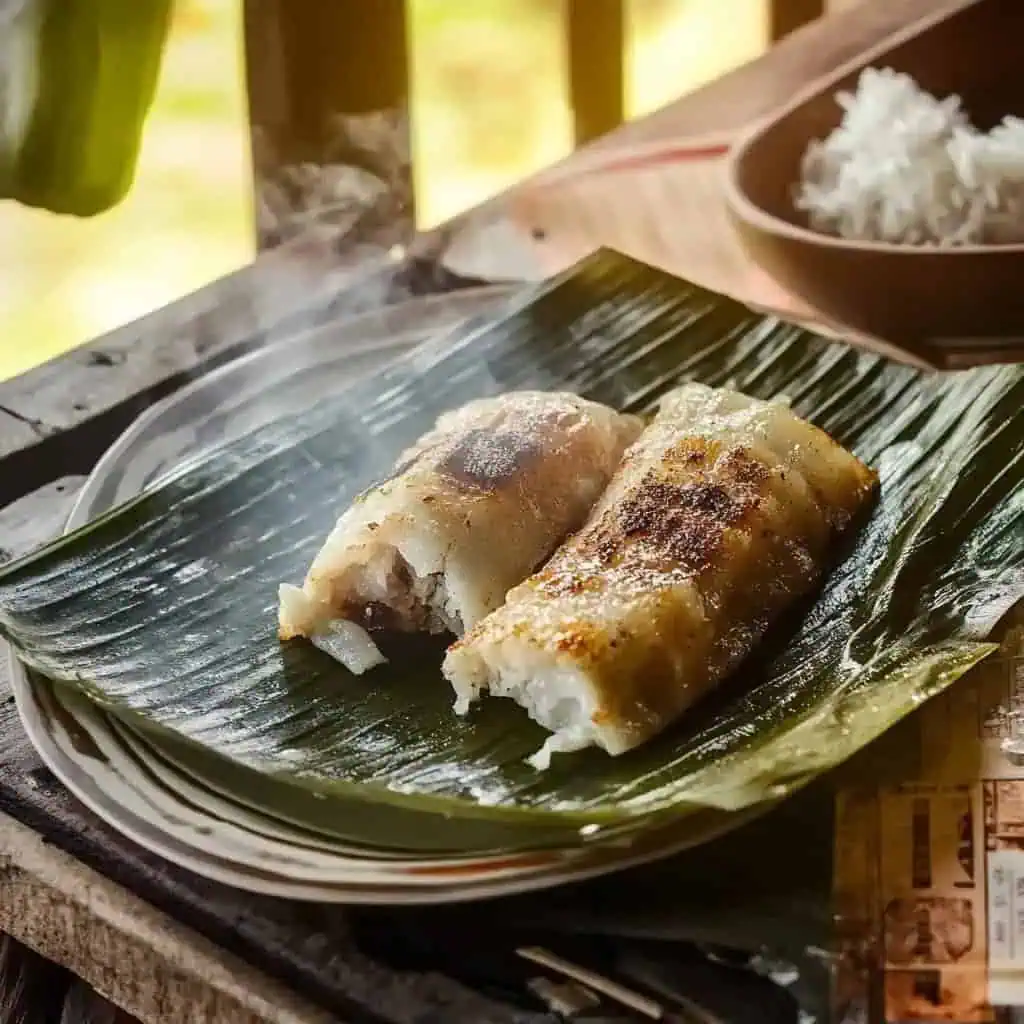
How To Make
- Begin one day before by soaking your glutinous rice in cool water at room temperature overnight.
- The next day, clean your banana leaves with a damp cloth. Quickly pass each leaf over an open flame to make them soft and bendable, then cut them into 8x6 inch rectangles.
- Drain the soaked rice thoroughly in a cheesecloth or strainer. Make sure to squeeze out all excess water.
- Put the drained rice in a blender and grind it until it becomes a fine powder.
- Add your coconut milk and brown sugar to the rice powder in the blender. Blend everything until smooth and well mixed. Pour this into a bowl and gently stir in the young coconut strips.
- Get your charcoal grill hot to medium-high heat (375°F/190°C). While it's heating up, start wrapping your tupig.
- Take a prepared banana leaf and put two tablespoons of the mixture in its center. Carefully roll the leaf around the mixture, then fold in the edges to seal it. The mixture will be quite runny, so work carefully.
- Place each wrapped tupig on the hot grill right after you wrap it. Cook for about 8-10 minutes total, turning every 2 minutes so it cooks evenly. You'll know it's done when the banana leaves are nicely charred and the tupig feels firm when you gently press it.
- Take them off the grill once cooked. Let them cool slightly before eating, just enough so you don't burn yourself. When you open the banana leaf, you should see a golden-brown rice cake that's slightly crispy outside and chewy inside.
- Serve while still warm for the best experience.

Tips from Lola's Kitchen
- Always use cold water for soaking rice - Never use hot water, as cold water allows the rice to absorb moisture gradually for the best texture.
- Fresh ingredients make all the difference - Fresh young coconut strips give a superior flavor compared to mature coconut or dried versions.
- Double-wrap if necessary - If your banana leaves tear, double-wrap to prevent leaking during the grilling process.
- Give your tupig space - Don't overcrowd the grill; leave space between pieces to ensure even cooking and proper charring.
- Embrace the runny consistency - A slightly runnier batter actually yields a softer, more tender tupig.
- Banana leaf preparation is crucial - Take time to properly heat your banana leaves over flame to prevent cracking and enhance the aroma they impart.
- Watch your heat - Too hot, and your tupig will burn before cooking through; too cool, and it won't develop the characteristic charring.
Substitutions
- Banana leaves alternative - If banana leaves are unavailable, parchment paper can work in a pinch, though you'll miss the distinctive aroma.
- Brown sugar options - Muscovado sugar or coconut sugar can be substituted for traditional brown sugar for different flavor profiles.
- Young coconut alternatives - If fresh young coconut isn't available, you can use packaged coconut strips, though the texture will be slightly different.
- Coconut milk substitute - In a real pinch, you can use a mixture of heavy cream and coconut extract, though fresh coconut milk is strongly preferred.
- Non-traditional additions - Modern versions sometimes incorporate vanilla extract or a pinch of salt to enhance flavors.
Troubleshooting
- Mixture too thick? Add coconut milk one tablespoon at a time until you reach the right consistency—it should be slightly runny but not watery.
- Mixture too runny? Add a little more ground rice to thicken it up. The ideal consistency is similar to pancake batter.
- Banana leaf breaking? Your leaves might not be softened enough. Pass them over flame again and consider using a double layer for wrapping.
- Tupig burning too quickly? Raise the height from the charcoal or lower the heat. Turning more frequently can also help.
- Rice not fully cooked? Your grill temperature might be too high, causing the outside to char before the inside cooks. Lower the heat and cook for longer.
- Tupig sticking to leaves? Lightly brush the leaves with a small amount of oil before adding the mixture.
Storage & Reheating
- Room temperature storage - Tupig can be stored at room temperature for up to 2 days if wrapped well in the original banana leaves.
- Refrigeration - Store in an airtight container for up to 5 days in the refrigerator.
- Freezing - Wrap individual pieces tightly in plastic wrap, then place in a freezer bag for up to 1 month.
- Reheating on the grill - For the best flavor, reheat on a medium-hot grill for 2-3 minutes per side until warmed through and slightly crisp on the outside again.
- Stovetop reheating - Use a non-stick pan on medium heat for 2-3 minutes per side.
- Microwave in a pinch - If necessary, microwave for 20-30 seconds, though this won't restore the crispy exterior.
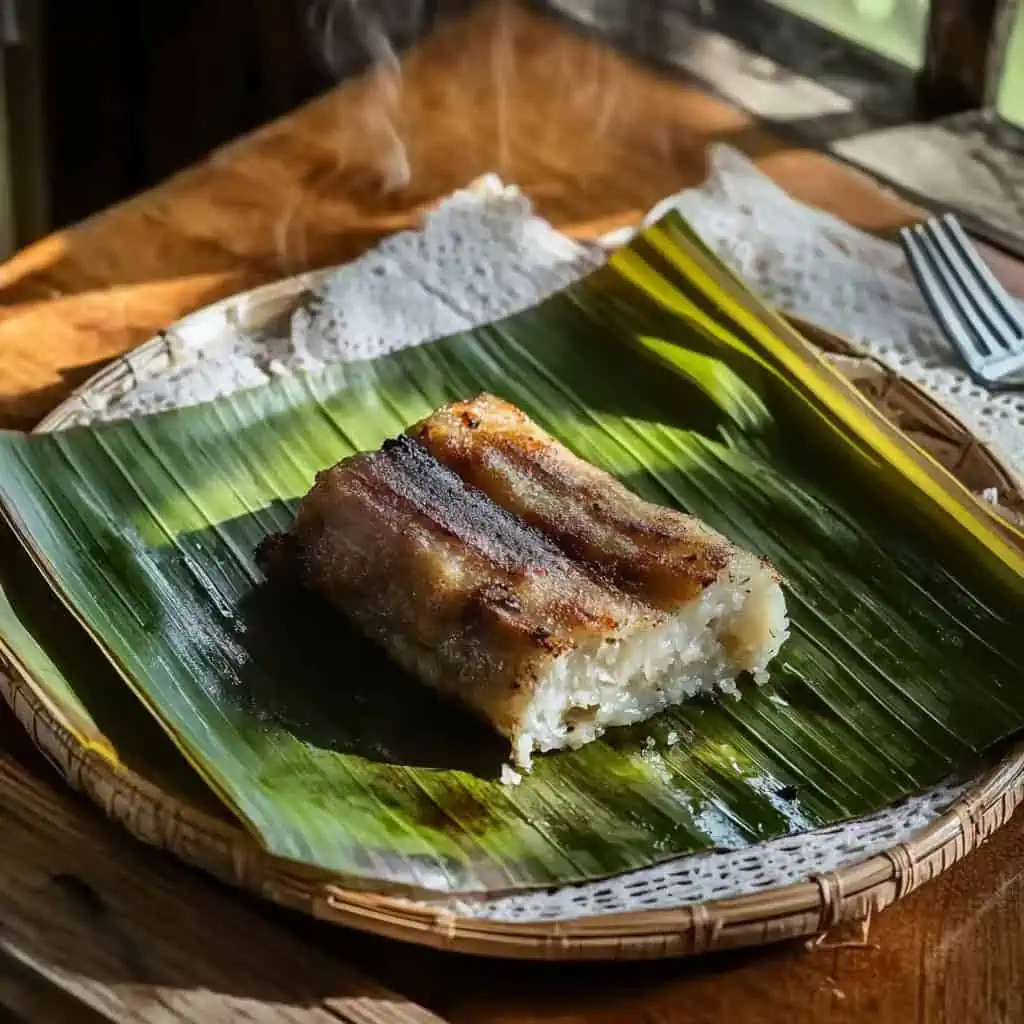
FAQ
Can I use regular rice instead of glutinous rice?
No, glutinous rice (malagkit) is essential for the correct texture. Regular rice won't provide the chewy, sticky consistency that defines tupig.
Can I use aluminum foil instead of banana leaves?
While possible, banana leaves impart essential flavor and authenticity. The unique aroma and slight moisture from the leaves are key components of traditional tupig.
How do I know when tupig is fully cooked?
The banana leaves should be well-charred, and the tupig should feel firm when pressed gently. When opened, the tupig should be golden-brown and cooked through.
Can I make this without a charcoal grill?
Yes, but charcoal provides the best traditional flavor. Electric grills or stovetop grilling can work as alternatives, though the smoky flavor will be less pronounced.
Why is my tupig too dry/hard?
This usually happens when the rice-to-liquid ratio is off or when it's overcooked. Ensure you're using the correct measurements and watch your cooking time carefully.
Can I prepare the mixture ahead of time?
Yes, you can prepare the mixture up to 12 hours ahead and store it in the refrigerator. Bring it to room temperature before wrapping and grilling.
How long should I soak the rice?
At least 8 hours, but overnight (12-24 hours) is ideal for the best texture.
Can tupig be made without a blender?
Traditionally, rice was ground using stone grinders. While possible, achieving the fine powder consistency without a blender is challenging. A food processor can work as an alternative.
Is tupig gluten-free?
Yes, traditional tupig is naturally gluten-free as it uses rice and coconut-based ingredients.
What makes the authentic Pangasinan version special?
The Pangasinan version is known for its perfect balance of chewy and caramelized textures, simple ingredient list, and the distinctive charcoal grilling method that creates a smoky flavor.
Related
Looking for other recipes like this? Try these:
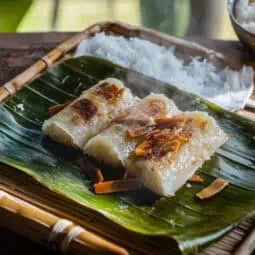
Authentic Pangasinan Tupig (Intemtem)
Equipment
- Blender or food processor (Para sa paggigilng ng bigas / For grinding rice)
- Cheesecloth or fine strainer (Panala / For straining)
- Charcoal grill or flat griddle (Ihawan / For grilling)
- Mixing bowls (mangkok)
- Measuring cups and spoons (Panukat)
- Tongs (Sipit / For handling wrapped tupig)
- Sharp knife (For preparing banana leaves)
- Clean kitchen towels
Ingredients
- 2 packed cups glutinous rice Malagkit na bigas
- 1 cup young coconut strips Buko strips
- 1 cup coconut milk Gata
- ½ cup brown sugar Asukal na pula
- Banana leaves Dahon ng saging, cleaned and softened over heat
- Water for soaking
Instructions
- Begin one day before by soaking your glutinous rice in cool water at room temperature overnight.
- The next day, clean your banana leaves with a damp cloth. Quickly pass each leaf over an open flame to make them soft and bendable, then cut them into 8x6 inch rectangles.
- Drain the soaked rice thoroughly in a cheesecloth or strainer. Make sure to squeeze out all excess water.
- Put the drained rice in a blender and grind it until it becomes a fine powder.
- Add your coconut milk and brown sugar to the rice powder in the blender. Blend everything until smooth and well mixed. Pour this into a bowl and gently stir in the young coconut strips.
- Get your charcoal grill hot to medium-high heat (375°F/190°C). While it's heating up, start wrapping your tupig.
- Take a prepared banana leaf and put two tablespoons of the mixture in its center. Carefully roll the leaf around the mixture, then fold in the edges to seal it. The mixture will be quite runny, so work carefully.
- Place each wrapped tupig on the hot grill right after you wrap it. Cook for about 8-10 minutes total, turning every 2 minutes so it cooks evenly. You'll know it's done when the banana leaves are nicely charred and the tupig feels firm when you gently press it.
- Take them off the grill once cooked. Let them cool slightly before eating - just enough so you don't burn yourself. When you open the banana leaf, you should see a golden-brown rice cake that's slightly crispy outside and chewy inside.
- Serve while still warm. If you need to save some for later, let them cool completely first, then store in an airtight container. They'll keep at room temperature for two days, in the fridge for up to five days, or in the freezer for one month. To reheat, just put them on a hot grill or pan for 2-3 minutes on each side.
Tips from Lola's Kitchen
- Soak rice in cold water, never hot, for best texture
- Fresh young coconut strips give better flavor than mature coconut
- If banana leaves tear, double-wrap to prevent leaking
- Don't overcrowd the grill; leave space between pieces
- The runnier consistency of batter yields softer tupig
Nutrition
The Story Behind Pangasinan Tupig
The rich culinary heritage of Pangasinan province comes alive in Tupig, a traditional Filipino rice cake that has captivated taste buds for generations. This beloved delicacy, also known as Intemtem in local dialects, represents the ingenious cooking methods of our ancestors who masterfully combined locally abundant ingredients - glutinous rice, coconut, and banana leaves - to create a dish that would become a cultural touchstone.
Originally, Tupig held a special place in Filipino holiday traditions, particularly during the Christmas season. In the pre-1960s era, this sweet rice cake was a cherished reward for carolers, who would receive these carefully wrapped treasures as they went from house to house spreading yuletide cheer. This tradition, similar to trick-or-treating in Western cultures, helped cement Tupig's role in Filipino cultural celebrations.
The 1960s marked a significant turning point in Tupig's history. What was once exclusively a seasonal treat began its transformation into a year-round commercial success. Street vendors, recognizing the growing demand, started selling these aromatic parcels at busy intersections and provincial boundaries. Today, travelers along major thoroughfares in Northern Luzon, particularly along the Manila-Baguio route, eagerly anticipate stopping at towns where skilled Tupig makers offer their freshly grilled creations.
Innovation has touched this traditional recipe as well, though the core preparation method remains unchanged. Modern variations have emerged to cater to evolving tastes, incorporating distinctly Filipino flavors such as ube (purple yam), pandan, langka (jackfruit), and even strawberry. These adaptations demonstrate how Tupig continues to evolve while maintaining its cultural significance.
The preparation of Tupig showcases the sophisticated understanding our ancestors had of cooking techniques. The overnight soaking of glutinous rice, the precise grinding process, and the crucial charcoal grilling method all contribute to its distinctive texture and flavor profile. The banana leaf wrapper is not merely a container but an essential ingredient, imparting a subtle aroma and ensuring the perfect level of caramelization during the grilling process.
For overseas Filipinos, Tupig represents more than just a sweet treat - it embodies the flavors of home and childhood memories. Social media posts featuring this humble rice cake often garner significant engagement from the Filipino diaspora, highlighting its emotional resonance within the community. This enduring connection demonstrates how traditional foods like Tupig serve as vital links to our cultural heritage, bridging geographical distances and generations.
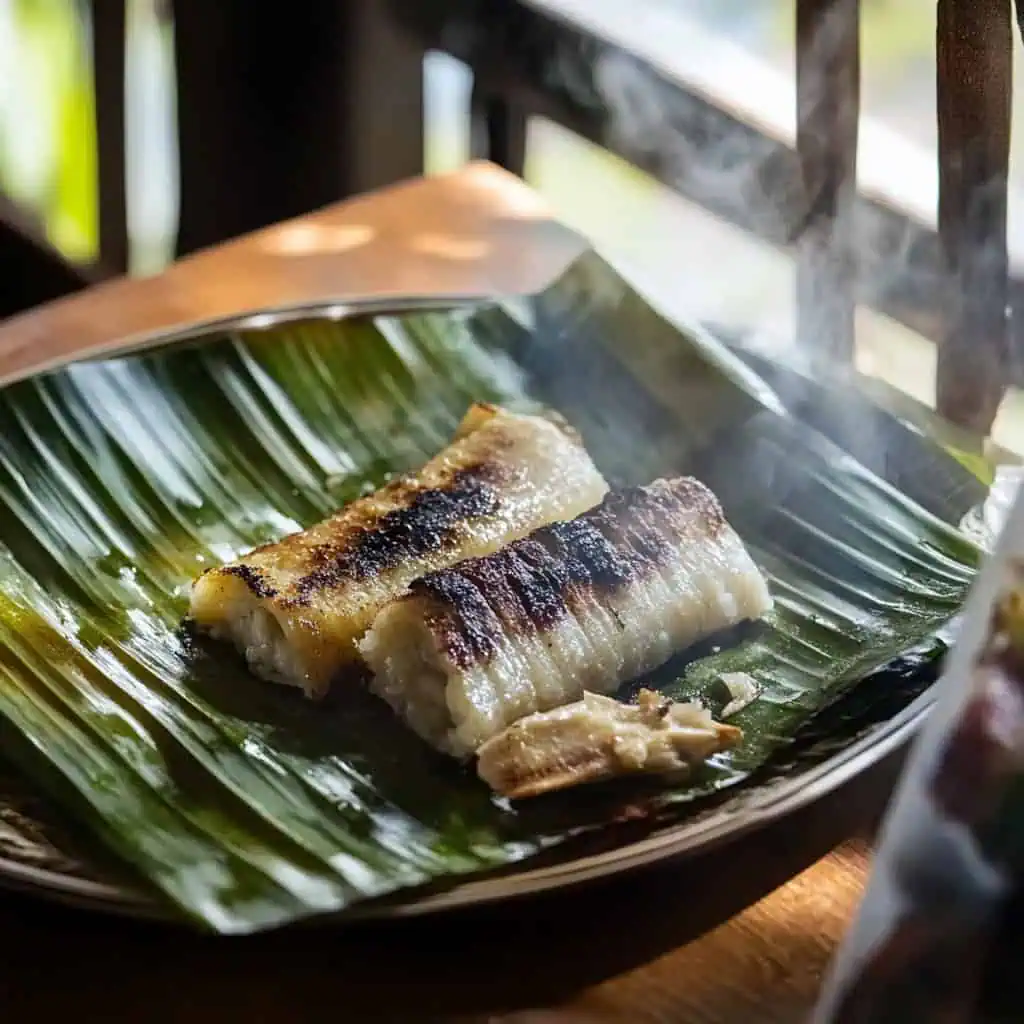





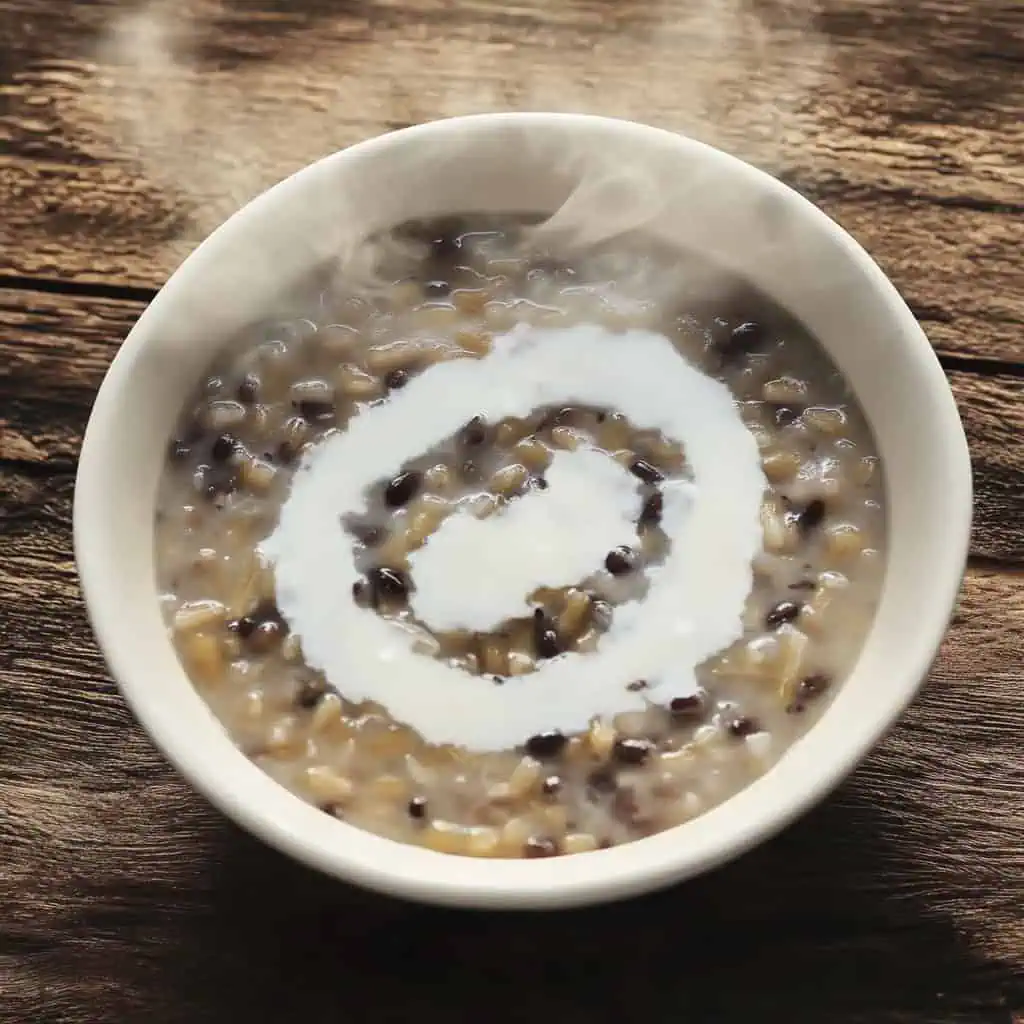
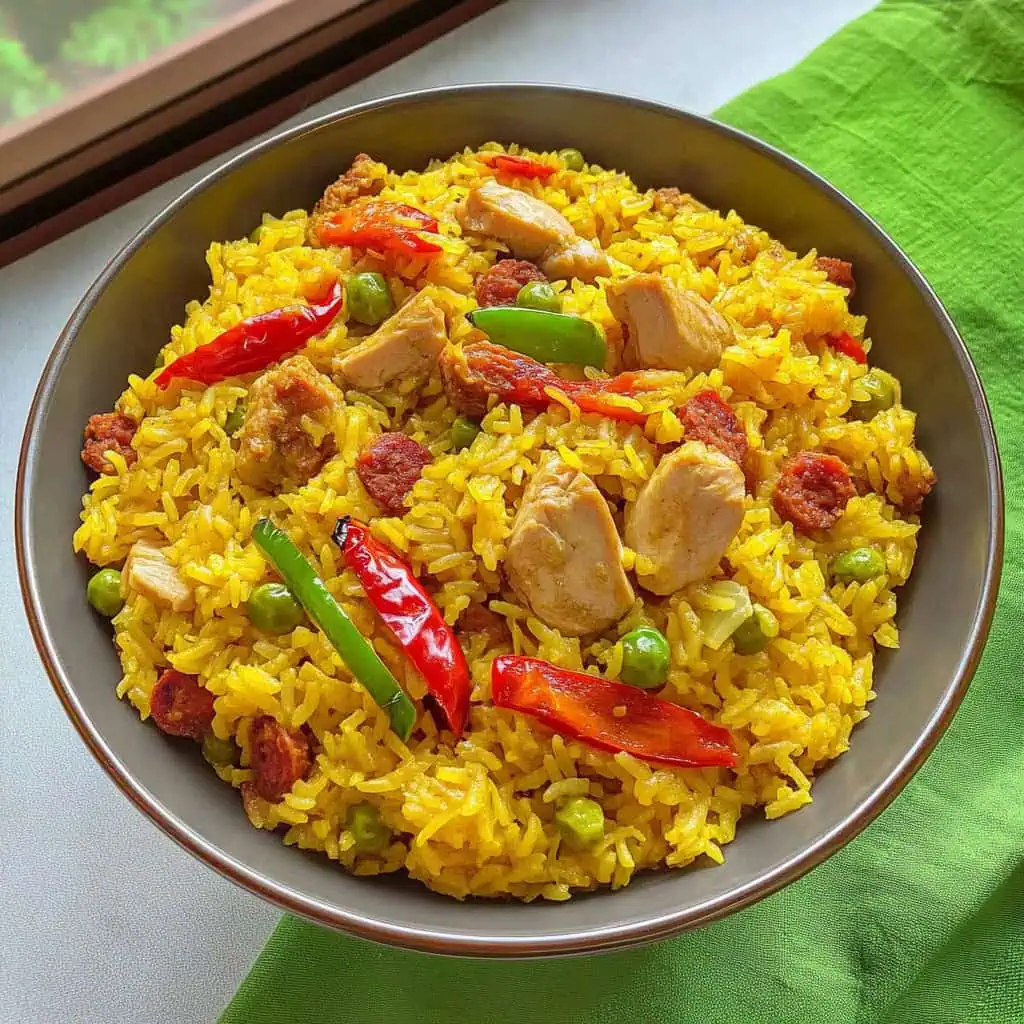
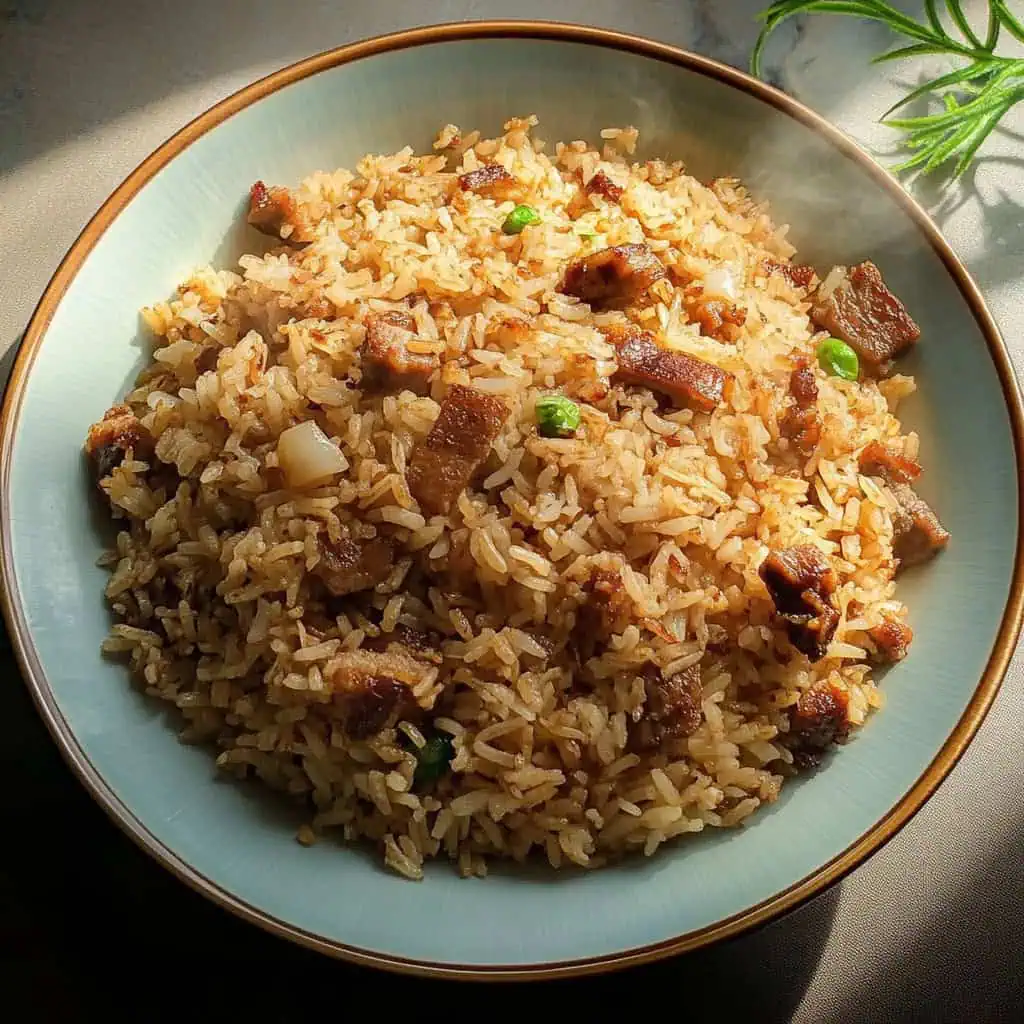
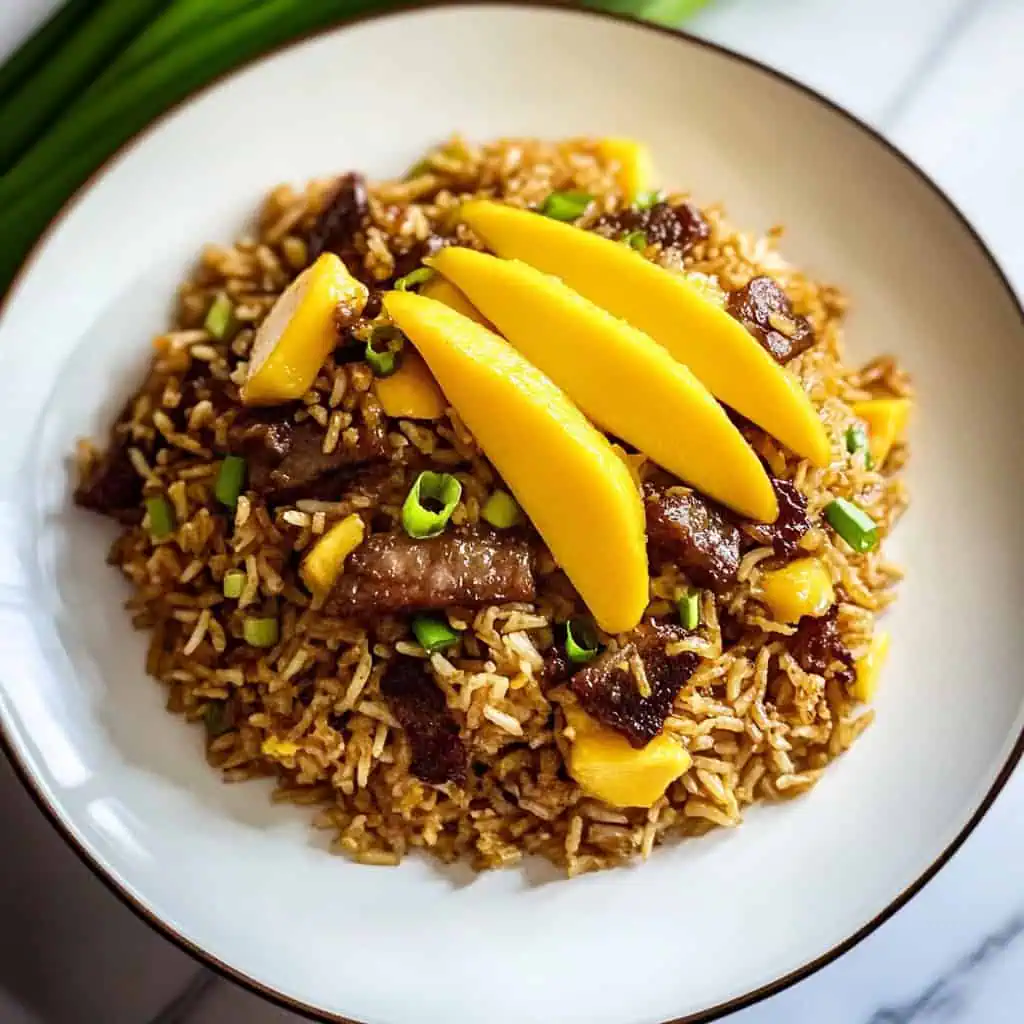
Comments
No Comments